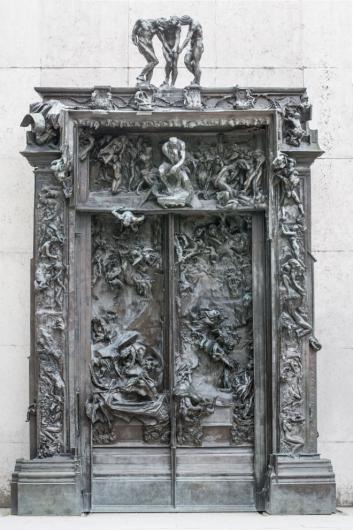About The Gates
This site allows you to explore The Gates of Hell, the monumental masterpiece for which Rodin created more than 250 groups and figures, including some of his most renowned compositions: The Thinker, Ugolino and His Children, Fugit Amor, among others. The Gates are a true repertory of forms that he drew on throughout his entire career to create new versions of his works through variants, simplification, assemblage, enlargement, etc.
The sculptor received the commission in 1880 for a “decorative portal” embellished with “bas-reliefs representing Dante’s Divine Comedy”, as described in the ministerial order. At the time he was coming up to 40, and had not yet made a name for himself on the artistic scene. He threw himself into his work with passion, first taking his inspiration from Dante’s Inferno, the first cantica of The Divine Comedy, the famous text in which the 13th century poet from Florence describes his travels through the nine circles of Hell.
Rodin gradually incorporated a new source of inspiration, which soon took precedence: The Gates of Hell is ultimately a greater reflection of Baudelaire’s Flowers of Evil than Dante’s Inferno. The true subject developed by Rodin is less the punishment of sins and more the exploration of human passions, and more specifically the urges and tortures that desire awakens in us all.

